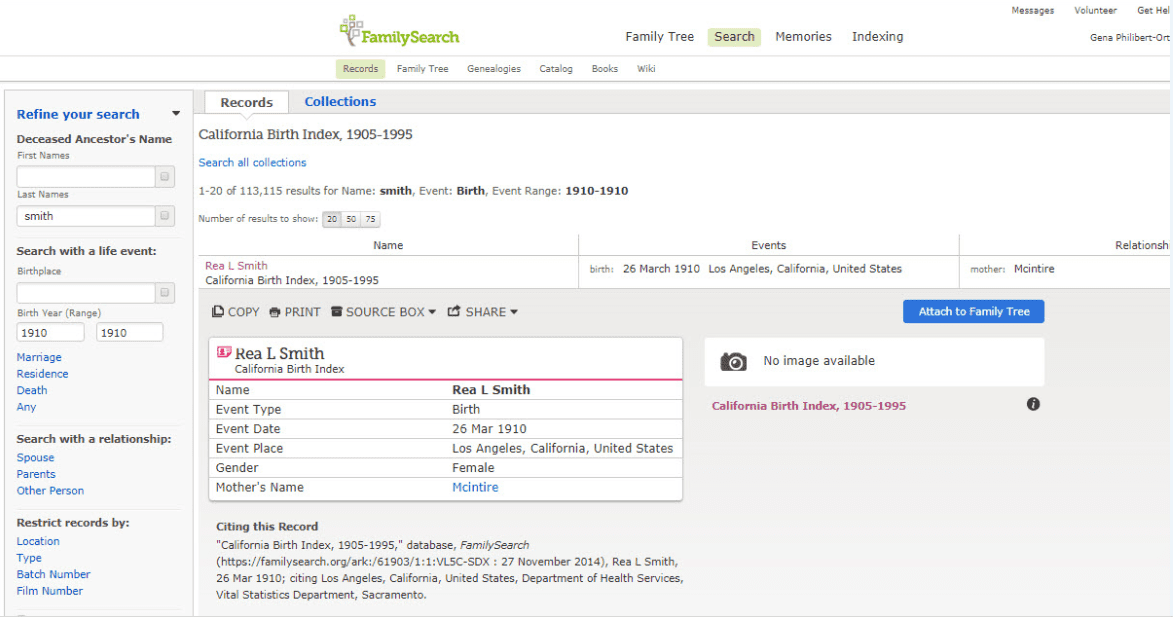Introduction: In this article, Gena Philibert-Ortega shows how important genealogical indexes can be for family historians. Gena is a genealogist and author of the book “From the Family Kitchen.”
Indexes have been an important part of genealogy research for some time. But even though they are a much-used resource, that doesn’t mean they aren’t without their problems. Let’s take a look at indexes, what they are, and a few that are the most familiar to family historians.
Defining Indexes
For many people, the most familiar index is the one found in a book. Book indexes are an alphabetical listing found at the back of a book comprised of words or topics and the page numbers where they can be found.
Genealogical indexes work similarly in that they are a finding aid to help researchers locate original records. A genealogical index of an original record set includes at the very least a name, but in some cases additional information such as dates or locations. While an index can be an important step in finding ancestors, it should be remembered that it’s only a first step – and should be followed up with the original records.
All types of records might be indexed. For example, in the years prior to the digitization of newspapers, indexes were diligently compiled by volunteers who pored over newspapers and extracted names, dates, and events that seemed to hold the most importance. In some cases, this indexed information was typed onto index cards and catalogued in a manner similar to other library resources. These indexes helped researchers locate their ancestor quickly in what would otherwise be a laborious process of reading the newspaper page by page.
Indexes are commonly found for birth, marriage, and death records. These are extremely beneficial in finding names when the date or the location of the event is unknown. Indexes for marriages might provide both the groom and the bride’s name, making it easier to find the couple when only one name is known. These types of indexes can be found on various genealogy websites and in printed books.

One of the more famous indexes used by researchers is the Social Security Death Index (SSDI). GenealogyBank provides the SSDI and describes it as “…over 94 million death records for individuals with United States Social Security numbers. Find helpful family history information including death dates, locations, first & last names, birth dates and more.” Genealogists use this to help determine the 20th century death date for ancestors. Additionally, they may go on to order the Social Security Application to learn even more about their ancestor.

Another important series of indexes I used when I was researching for my book Cemeteries of the Eastern Sierra (Arcadia, 2007) were cemetery indexes that I found via the FamilySearch Catalog. Even though I went and walked each cemetery found in my book, the indexes helped me “read” tombstones that were missing or difficult to read. It also helped me understand the cemeteries and who was buried there before I did hands-on research. To find these types of indexes, I suggest going to the FamilySearch Catalog and conduct a Place search and then click on the subject Cemeteries.
The Trouble with Indexes
Indexes sound great, right? They provide an easy way to find information. So, what’s the problem? Indexes are transcriptions, meaning that a person looked at the records and then extracted the “pertinent” information from what they saw. Whenever we index or transcribe records, we run the risk of introducing human error which can include accidental deletions, misspellings, and misinterpretations.
It’s also a mistake to think that an index holds all the information available for a specific record set. It’s important to remember that whatever group is commissioning the index decides what information to include and exclude. That means that important information found on a form can be excluded, including any random, additional comments that were written. When we use indexes, we lose the context of the document – and that also means that we can miss out on the overall meaning.
So, Now What?
You’ll come across genealogy record indexes on many websites and in the libraries you research. Use them! But note what the original source is and seek that source out. The index should be used as a finding aid to help you find what you need. Always verify that information you find with the original record when possible.
